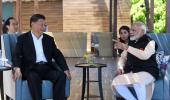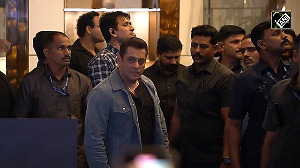China is currently at an important juncture with changing demographics and economic landscape.
While its labour force and savings are declining, in India the trends are exactly opposite.

Chinese President Xi Jinping just concluded his informal visit to India, meeting Prime Minister Narendra Modi in Mahabalipuram.
Both leaders discussed various issues, ranging from economic cooperation in global stability and security.
Interestingly, China is currently at an important juncture with changing demographics and economic landscape.
China's working-age population is receding, as the share of persons aged between 15 and 64 has started falling in recent years.
The same is rising in India (Chart 1).

Similarly, the absolute strength of the Chinese labour force dropped for the first time since the demographic bulge about three decades ago.
India's labour force, on the other hand, is growing (Chart 2).

Savings and investment rates are also declining in China (Chart 3).

A decline is being witnessed in India as well,which needs to be reversed.
For the first time since the 1990s, China is on the path to record a current account deficit, with surplus shrinking to 0.4 per cent of gross domestic product in 2018 (Chart 4).

The surplus on current account was as high as 10 per cent of GDP a decade ago.
This is also because of China’s shift from investment to consumption-led growth.
The share of consumption in China's GDP is rising steadily since 2010, with a marginal blip in 2018 (Chart 5).

But how will India benefit from this?
A recent Credit Suisse report puts the value of exports shifting from China at nearly $ 450 billion.
But it estimates that Vietnam, not India, would benefit the most from the shift (Chart 6).

India would benefit with exports worth $ 70 billion, adding to its $ 330 billion worth of merchandise exports.
Sources: World Bank, Credit Suisse; Compiled by BS Research Bureau.
Photograph: PTI Photo












 © 2025
© 2025